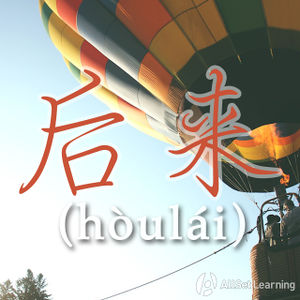Sequencing past events with "houlai"
-
Level
-
Similar to
-
Used for
-
Keywords
"..., 后来..." (..., hòulái...) is used to sequence past events in the same way that "Afterward..." is in English. Something very important to note is that 后来 can only be used with two events that have already occurred.
Structure
Past Event #1 + 后来 + Past Event #2
Examples
Here are some examples of this pattern in action:
- 开始 他 不 同意,但 后来 他 同意 了。 At first he didn't agree, but then he did later.
- 上 个 星期 我 的 朋友 生病 了,不过 后来 他 病 好 了。Last week my friend got sick, but then he got better.
- 她 昨天 吃 了 海鲜,后来 她 食物 中毒 了。She ate seafood yesterday, but then she got food poisoning.
- 我邻居家 的 小孩 丢 了 一年,后来 又 找到 了。My neighbor's child was missing for one year, and then they found him .
- 北京 以前 叫 北平 ,后来 改 成 了 北京。 Beijing used to be called Beiping and got changed into Beijing later.
See also
- Before and after with "zhiqian" and "zhihou"
- Saying "ever since" with "yilai"
- In the future in general
- Comparing "houlai" and "ranhou"



